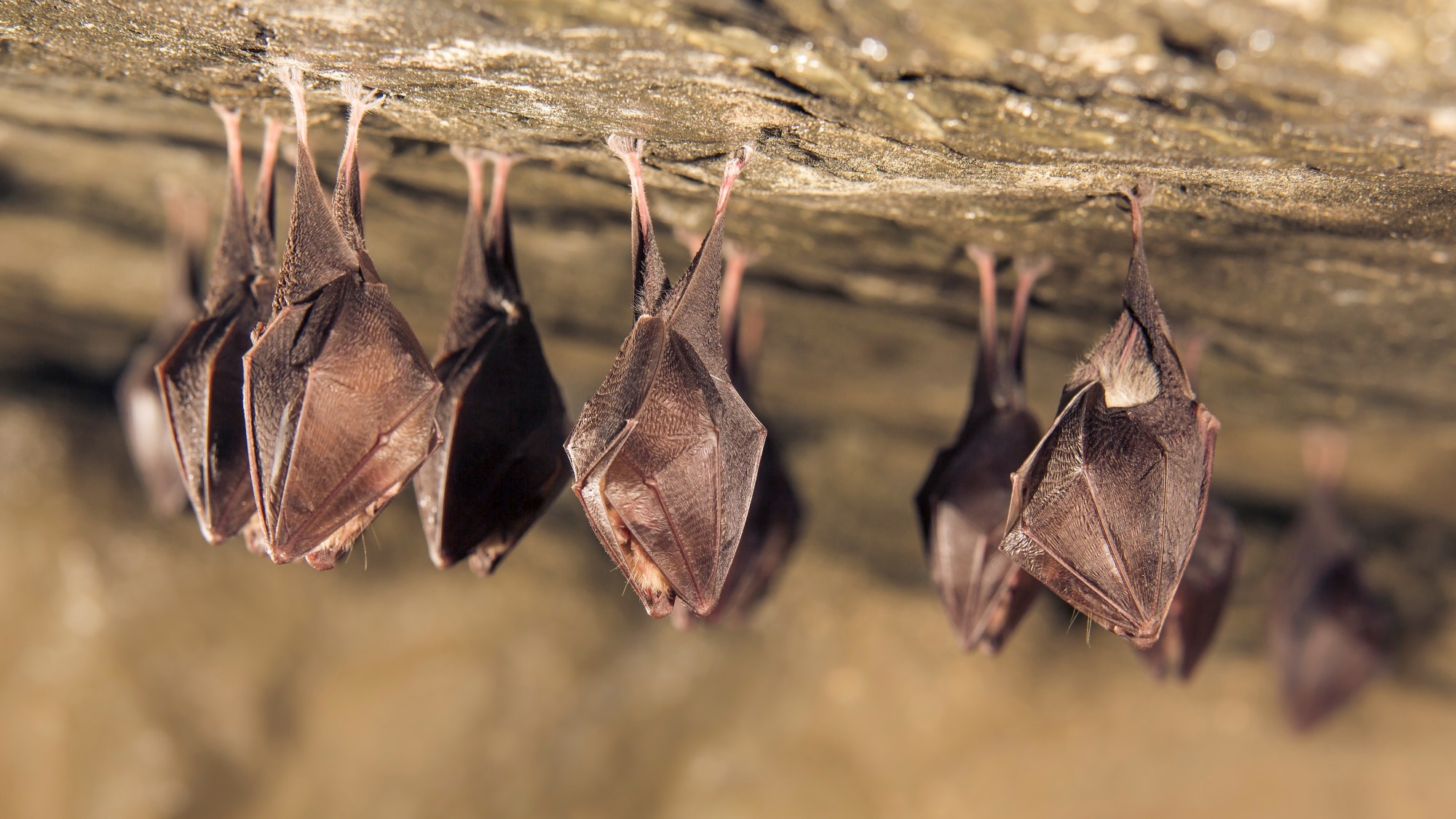In a recent study posted to the bioRxiv* preprint server, researchers investigated host angiotensin-converting enzyme 2 (ACE2) tropism of severe acute respiratory syndrome coronavirus 2 (SARS-CoV-2)-related coronaviruses (SC2r-CoVs) infecting Rhinolophus bats.
 Study: Determination of the factors responsible for host tropism of SARS-CoV-2-related bat coronaviruses. Image Credit: MartinJanca/Shutterstock.com
Study: Determination of the factors responsible for host tropism of SARS-CoV-2-related bat coronaviruses. Image Credit: MartinJanca/Shutterstock.com

 *Important notice: bioRxiv publishes preliminary scientific reports that are not peer-reviewed and, therefore, should not be regarded as conclusive, guide clinical practice/health-related behavior, or treated as established information.
*Important notice: bioRxiv publishes preliminary scientific reports that are not peer-reviewed and, therefore, should not be regarded as conclusive, guide clinical practice/health-related behavior, or treated as established information.
Background
Factors determining the host tropism of SC2r-CoVs, which partially depend on the tropism of host ACE2 genes usage, remain unknown.
Interactions between viral proteins and host receptors determine the host range of a virus. For instance, human influenza A viruses (IAVs) preferentially bind α2-3-linked sialic acid; conversely, avian IAVs bind α2-6-linked sialic acid.
Similarly, the variation in amino acid residues of the Niemann-Pick C1 protein, a host receptor, determines the host range of the Ebola virus.
Therefore, if the amino acid residues of the SC2r-CoV S proteins that determine its affinity to human ACE2 could be identified, it would be feasible to infer from the S gene sequence alone whether an SC2r-CoV could potentially transmit into humans.
About the study
In the present study, researchers endeavored to determine the phylogenetic relationship of SC2r-CoVs in Rhinolophus bats and pangolins. For structural analysis and cell culture experiments, they used HOS-TMPRSS2 cell lines expressing ACE2 receptors of eight Rhinolophus bat species, viz., R. affinis, R. cornutus, R. ferrumequinum, R. macrotis, R. pearsonii, R. pusillus, R. shameli, and R. sinicus.
They also synthesized the human immunodeficiency virus type 1 (HIV-1)-based pseudoviruses having the spike (S) glycoproteins of SC2r-CoVs, BANAL-20-236, and BANAL-20-52.
The team also assessed the amino acid polymorphisms in ACE2 proteins that could be associated with susceptibility to viral sequences of BANAL-20-236 and BANAL-20-52, B52 and B236. This helped them identify the genetic determinants of susceptibility to B52 and B236 infections in ACE2 proteins.
Next, the team calculated the relative infectivity score between B236 and B52, i.e., log10(B236 infectivity/B52 infectivity, for each ACE2. Finally, they evaluated the association between this score and amino acid polymorphism at each site in the ACE2 protein.
Additionally, the researchers prepared homology models of the ACE2 proteins of four Rhinolophus bats, R.cornutus, R. macrotis, R. pusillus, and R. sinicus, and constructed docking models with the S receptor binding domains (RBDs) of B236 and B52.
Finally, the team prepared two S protein derivatives of B236 and B52, which harbored the mutations at residue 493, namely B236 S K493Q and B52 S Q493K.
Study findings
The study findings pointed at differential ACE2 tropism in SC2r-CoVs infecting Laotian bat species, B236 and B52.
On the viral side, the amino acid residue positioned at 493 was the only residue in the SARS-CoV-2 S protein that could interact with human ACE2 and varied between B52 and B236 bat species.
It formed a salt bridge with the host ACE2 protein's amino acid residues at positions 31 and 35. Although eight amino acid sites showed susceptibility, residue 35 exhibited the strongest inclination to interact with SARS-CoV-2 S RBD, particularly with its four amino acid residues 30, 31, 35, and 79.
Some previous studies have shown that S gene mutations alter the host range of all SC2r-CoVs. For instance, the N501Y mutation in the S protein of the SARS-CoV-2's ancestral Wuhan-Hu-1 strain facilitated the Alpha and subsequent variants to use the murine ACE2 receptor for establishing infection.
The mutational pattern of the SARS-CoV-2 S residue 493 was exceptional. The authors noted that the S proteins of SARS-CoV-2 ancestral Wuhan-Hu-1 strain and early variants of concerns (VOCs), harbored Q493, while Omicron BA.1/BA.2 acquired mutations at position R493.
A study by Wang et al. demonstrated that the R493Q reversion mutation improved Omicron's affinity to human ACE2. In another study, the authors of this study showed that the R493Q reversion mutation helped evade Omicron BA.2-induced humoral immunity.
These findings suggested that there might be a correlation between the humoral immunity of Rhinolophus bats against SC2r-CoVs and the conversion susceptibility of residue 493 to promote immune evasion or vary affinity to the host ACE2 receptor.
Conclusions
Since Rhinolophus bats have highly diverse ACE2 genes, the tropism of SC2r-CoVs varies for them, which promotes them to infect other host species, including humans.
The researchers emphasized the need for monitoring all SC2r-CoVs in the wild with the zoonotic potential to spread in humans. In this regard, continuous monitoring of mutations in their S proteins that alter host ACE2 receptor usage would help estimate the entire host range of SC2r-CoVs of concern.

 *Important notice: bioRxiv publishes preliminary scientific reports that are not peer-reviewed and, therefore, should not be regarded as conclusive, guide clinical practice/health-related behavior, or treated as established information.
*Important notice: bioRxiv publishes preliminary scientific reports that are not peer-reviewed and, therefore, should not be regarded as conclusive, guide clinical practice/health-related behavior, or treated as established information.